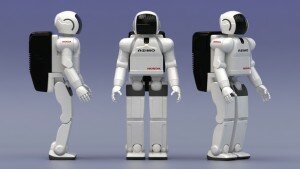 In Southwestern Japan, a hotel named Henn-na, the “” is almost entirely staffed by a team of robots. The receptionist is an English speaking robot, and rooms all feature lamp-size robots in the shape of a tulip that can answer simple questions and turn the lights on and off–handy, since there are no light switches on the walls.
In Southwestern Japan, a hotel named Henn-na, the “” is almost entirely staffed by a team of robots. The receptionist is an English speaking robot, and rooms all feature lamp-size robots in the shape of a tulip that can answer simple questions and turn the lights on and off–handy, since there are no light switches on the walls.
The robots can do almost everything for the hotel, something that owner Hideo Sawada is counting on to help make the property more efficient and affordable. However, the robots can’t do everything. Real people watch the security cameras to make sure that guests are safe (and that the guests don’t have their eye on a pricey robot), and the robots can’t make beds. However, the hotel is certainly achieving Sawada’s goals: “I wanted to highlight innovation,” he said. “I also wanted to do something about hotel prices going up.”
This isn’t the first Japanese operation to use robots to deal with customer service interaction. In fact, Japan’s largest bank is preparing to use robot employees at some of their branches. Their humanoid robot, Nao, can speak 19 languages and even analyze customer’s emotions from their facial expression and tone of voice.
“Robots can supplement services by performing tasks that our human workers can’t, such as 24-hour banking and multilingual communication,” Takuma Nomoto, chief manager of information technology initiatives at the bank, said to The . Japan, an already technologically advanced country, has been responding to a call from prime minister Shinzo Abe for the country to embark on a “robot revolution” to boost the economy and growth in the workforce. From the looks of it, it seems as if the Japanese are certainly doing so.
These type of robots are called “humanoid” robots. If you aren’t familiar with the robotics industry, humanoid robots are designed to imitate the shape of the human body, and are even developing into robots able to walk like a human as well as possess a full range of analytical skills and emotions. There have been some truly extraordinary human robots developed in the last thirty years: For example, take , unveiled by Honda in 2000. ASIMO could run and walk like a human and was upgraded in 2005 to be able to interact with humans, hold a platter, and serve food.
The latest humanoid robot, Poppy, stands on her own as a true feat of manufacturing robotics: Poppy was created by a 3D printer. French researchers created Poppy’s spine with five motors, a number that allows her to move naturally, adjust her posture, and walk in a biologically inspired walking motion. Plus, the cost of creating Poppy was cut by a third by using 3D technology, according to .
As these robots become continually more complex, they’ll be able to play a larger role in society and everyday activities. Technology is developing so quickly that manufacturing extraordinary humanoid robots may become a normal operation, and it could be as usual to have a robot bagging your groceries as a human. There’s no telling how long this will take or how possible it will be, but manufacturers and consumers alike will most likely witness the birth of humanoid robots as employees in their lifetimes. Who’s off for a stay at the Weird Hotel?
Questions? Comments? Want to learn more? Leave a comment in the section below!
—
Photo:
 Official Nebraska Government Website
Official Nebraska Government Website
